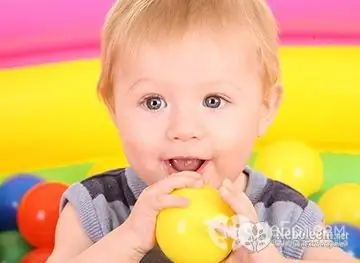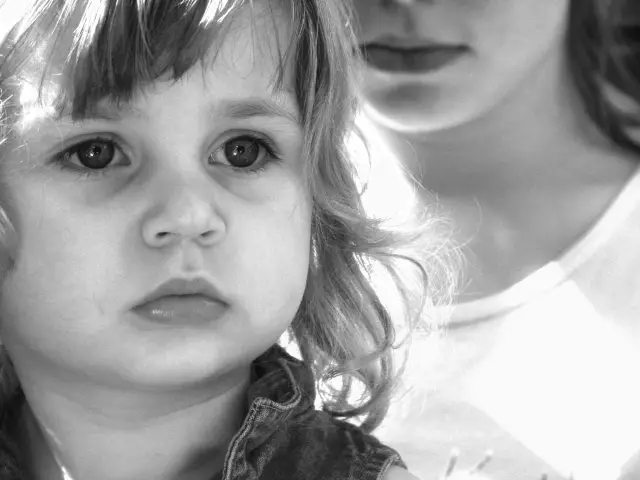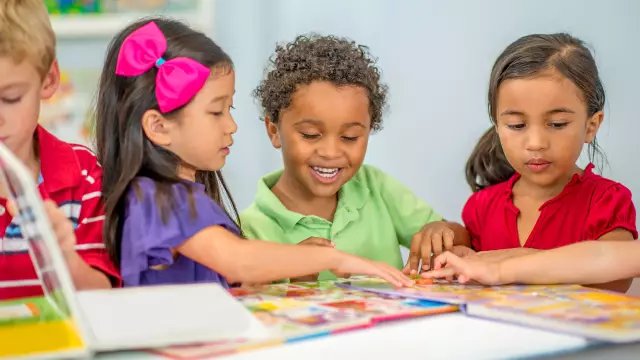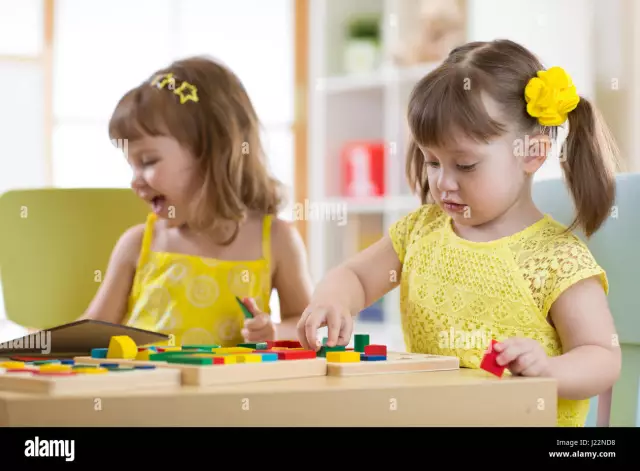- Author Rachel Wainwright [email protected].
- Public 2023-12-15 07:39.
- Last modified 2025-11-02 20:14.
Gymnastics for preschool children
Gymnastics for preschool children is of no small importance.

It is especially important for the child's growth and harmonious development. Gymnastics exercises for children are a complex of different movements and postures combined with correct diaphragmatic breathing. Properly organized gymnastics for preschool children makes it possible to compensate to some extent for the negative impact of stress and modern ecology on the child's body. It is desirable to perform the exercises with pleasant calm music. Sounds of nature and masterpieces of classical music are ideal. The gym is best done daily.
The benefits of gymnastics for preschool children
The benefits of gymnastics for children are undeniable. The body hardens, endurance develops and the child's immunity is strengthened. Gymnastics exercises are best done in a well-ventilated area or outdoors.
When performing the exercises, the skill of correct breathing is developed. With regular exercises and rhythmic movements, the child gradually develops the skill to breathe correctly, while the breathing technique is improved and the depth of inhalation increases. The movements of the preschooler are becoming more coordinated, every day he feels his body in space better and better.
With regular gymnastics for preschool children, the function of all organs of the young body is activated. Corrective gymnastics is very useful for strengthening the musculoskeletal system. It contributes to the formation of correct posture. Training of the abdominal muscles ensures the well-coordinated work of all digestive organs. When metabolic processes are activated, all organs of the child are cleared of harmful substances faster, and the work of the nervous system also improves, and the blood flow accelerates.
During the exercises, the preschooler studies and remembers all kinds of geometric shapes (walking in a square, circle), determines the sides (on command, turns left, right), learns to develop a certain rhythm of movements, march to music.
Types of gymnastics for preschool children
There are several types of gymnastics for preschool children. During basic gymnastics, drill, basic and general developmental movements are performed. During classes, sports and gymnastic equipment is usually used - hoops, jump ropes, balls. Dosage and selection of exercises for basic gymnastics should be done individually.
Rhythmic gymnastics has a more pronounced sports focus. Rhythmic gymnastics helps to develop beauty, harmony and grace of movement. This type of training necessarily includes some elements of dance to music. Exercises with various objects are widely used - ribbons, flags, hoops, balls.
In hygienic gymnastics for preschool children, physical exercises must be combined with hardening air and water procedures, massage. This type of exercise is useful for strengthening the immune system.
During acrobatic gymnastics, a child can perform some elements of acrobatics only with the help of adults. Somersaults and stretching exercises require a special, very careful approach.
Applied gymnastics includes physical education and remedial gymnastics. With regular exercises, the child's mood and general behavior is normalized, the state of the nervous system improves, and posture is corrected.
Rhythmic gymnastics is a type of basic gymnastics. Rhythmic gymnastics is performed with musical accompaniment. This type of gymnastics for preschool children contributes to the development of muscle freedom, expressiveness of movements, a sense of rhythm.
Gymnastics exercises for children of younger preschool age (up to five years old)
At a younger preschool age, it is best to acquaint children with the basics of gymnastics with the help of game elements. The following exercises can be performed with the child five to six times:
- The kid stands straight, legs slightly apart and arms lowered, and then begins to move his arms alternately back and forth (exercise "watch");
-
The child is standing, feet shoulder-width apart, when inhaling, he lifts his arms up, and when he exhales, he lowers him, while pronouncing “Oooh” (gymnastics exercises for children “reach up”);

Features of gymnastics for preschool children - The baby stands with his legs apart, raising his arms and joining them together, and then, when inhaling, he leans forward, and when exhaling, he puts his hands between his legs. When inhaling, it rises, the hands return to their original position (exercise "Lumberjack");
- The child lies on the floor, arms at the seams, legs stretched out together. Taking a breath, he raises his arms above his head and lowers them behind his head to the floor, and while exhaling, he moves his arms in the opposite direction and says very slowly “Come-and-from” (exercise in gymnastics for children “Lumberjack”);
- The kid lies on his back with his hands folded on his stomach, imagining that inside him is an inflated balloon. Slowly inhaling air through the nose, the child inflates his tummy, and then holds his breath for one to three seconds. When exhaling slowly through the mouth, it relaxes the abdomen (exercise "Ball").
Gymnastics for preschool children from five to seven years
Gymnastics for preschool children aged five to seven helps prepare your child for physical activities in school. Children at this age can do the exercises on their own, gradually complicating them. The preschooler can repeat the following exercises seven to eight times:
- The child is standing, feet shoulder-width apart, arms down. When inhaling, he spreads his arms wide to the sides, and when exhaling, he lowers them, saying “Kar-rrr” (exercise “Crow”);
- The child stands upright, hands down. Then, bending his arms at the elbows, he makes circular movements with them (gymnastics exercise for children "Train");
- The child stands, leaning forward and holding a stick in front of his back with two hands, and then turns his body first to the left and then to the right, breathing evenly.
Corrective gymnastics for children
In preschool children, posture disorders are often observed. These disorders can be corrected with corrective gymnastics for children. Corrective gymnastics is prescribed and monitored by a physician-specialist in physical therapy. Such classes can be conducted by a specially trained nurse of a medical and physical dispensary or a children's polyclinic or a methodologist of physical therapy.
In preschool institutions, such classes are not held, because the dosage and choice of exercises should be individual in each case.
Found a mistake in the text? Select it and press Ctrl + Enter.






